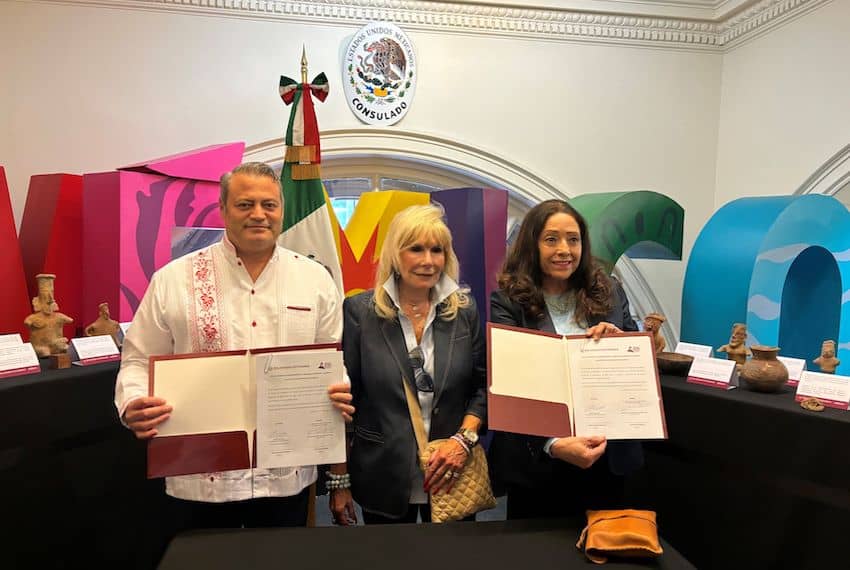Mexico is about to receive 22 archaeological pieces that have been returned to the country from a family in the United States that had collected them.
The pre-Columbian artifacts and figurines are coming home via the Mexican consulate in Philadelphia and the Mexican Cultural Center (MCC) in that city, according to a statement from the Foreign Affairs Ministry (SRE).

The return — part of the Mexican government’s international campaign to recover Mexican artifacts from abroad — has been a collaboration between the family of late collector Leonard Landau and Mexico’s Ministry of Culture. A reception to celebrate the return was held in Philadelphia on Wednesday.
“Last October, the Landau family decided to voluntarily deliver 29 pieces to the MCC, given the possible historical and cultural relevance” of those pieces, the SRE statement said.
Mexico’s National Institute of Anthropology and History (INAH) led an examination of the artifacts. Twenty-two were verified to be “made by various Mesoamerican cultures that inhabited our country between the years 400 B.C. and A.D. 1521, making them archaeological heritage of the nation.”
Five of the pieces date from the Mesoamerican Preclassic period (400 B.C.-A.D. 200), 16 are from to the Classic period (A.D. 200-700) and one is from the Postclassic period (A.D. 1200-1521).
The artifacts are on their way back to Mexico for proper investigation, conservation and care.
“We celebrate that it has been possible to return these 22 pieces to our country, which should never have left Mexico,” said Carlos Obrador Garrido Cuesta, consul general of Mexico in Philadelphia.
He also praised the special attention that the federal government has given to the recovery and rematriation of its historical heritage that, for various reasons, has ended up abroad. The concept of rematriation, in contrast to repatriation, refers to the return of these artifacts to Mexico: discussing the return of 30 pre-Columbian artifacts in February of this year, Foreign Minister Alicia Bárcena remarked that the recovery was “a rematriation because they will return to their motherland, to their mother communities.
“We are pleased to collaborate in this initiative that highlights the importance of recovering our archaeological heritage,” added Araceli Guenther, president of the MCC board of directors. “For the Mexican Cultural Center, it is an honor to have been the channel through which these pieces were recovered.”
Speaking about the late Leonard Landau, Guenther noted that the collector was “a lover of Mexican art [who] liked to collect archaeological pieces. After his death, his wife and his children believed that the right thing to do was to return them to Mexico.”
With reports from Milenio and La Jornada
